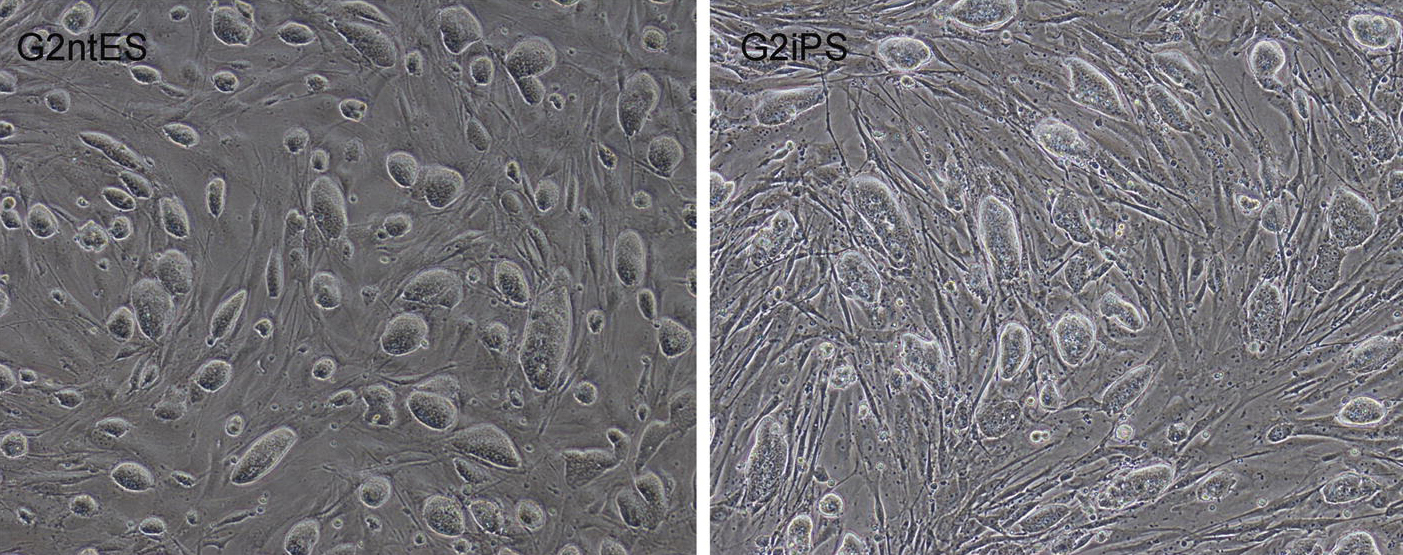Decoding reprogramming
Posted by Christele Gonneau, on 28 February 2014
When it comes to stem cell biology, there have been very few topics as fascinating and popular as cell reprogramming, the most famous reprogramming experiment being the one of Dolly the sheep. In stem cell biology, reprogramming refers to the concept of taking a fully specialized cell in the body and manipulating it in order to make it become another type of cell. One of the most popular approaches used by scientists to reprogram cells consists in taking a specialized cell and turn it into a pluripotent stem cell first. By definition, pluripotent stem cells can then be made to become any cell type of the body (differentiation) and kept indefinitely in the lab (self renewal).
One of the techniques used to reprogram cells into pluripotent stem cells is called somatic cell nuclear transfer (SCNT). It was used to create Dolly the sheep and consists in taking a specialized cell, extracting its nucleus (containing the genetic material), and transferring it into an empty egg (ie: the egg’s own nucleus was removed beforehand). It results in a viable embryo from which pluripotent stem cells (called embryonic stem cells) can then be isolated. Another approach, for which Prof. Yamanaka was awarded the Nobel Prize in 2012, consists in taking a specialized cell and introducing a few genes into it in order to force the production of a few key factors that induce pluripotency in the cell, producing what we call induced pluripotent stem cell (iPS).
When discovered, iPS-based reprogramming raised a lot of hope since it bypasses the need for an egg and the destruction of an embryo in order to obtain pluripotent stem cells, thus resolving one of the main ethical issues associated with stem cells. However, being so recently discovered, iPS cells are still under intensive scientific scrutiny to assess whether they are reliable and safe for clinical use.
In a recent report published in Cell Stem Cell, Le and colleagues compared mouse pluripotent stem cells obtained by SCNT versus ones obtained by iPS-based reprogramming. In the left panel of this picture, you can observe compact colonies of embryonic stem cells (ES cells) obtained from SCNT. On the right panel, you can observe similar compact shiny colonies of iPS cells. This shows that pluripotent stem cells obtained from both techniques have similar morphology; a morphology that is typical of “classically” obtained ES cells (ie: from a regular embryo). However, further down in their study, authors show that iPS cells have more genetic dysfunctions than SCNT pluripotent stem cells, demonstrating that SCNT is still superior to iPS-based reprogramming.
As a result, more studies are needed to understand which mystery factors in the egg are key to enhance the quality of iPS cells. So the decoding continues…
Picture credit:
Le, R., Kou, Z., Jiang, Y., Li, M., Huang, B., Liu, W., Li, H., Kou, X., He, W., Rudolph, K. L. et al. (2014) ‘Enhanced telomere rejuvenation in pluripotent cells reprogrammed via nuclear transfer relative to induced pluripotent stem cells’, Cell Stem Cell 14(1): 27-39. doi: 10.1016/j.stem.2013.11.005



 (1 votes)
(1 votes)